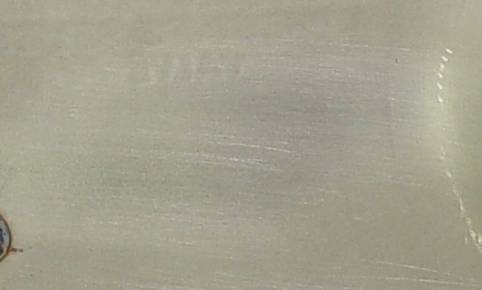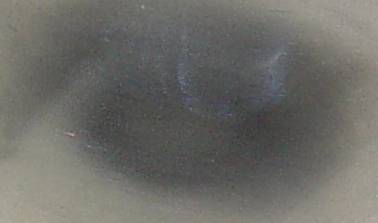Photomask
Well-Known Member
Photo #5 Scotch S/S Scrubbie
Photo #6 A S/S Toothbrush
Photo #7 Polished on a bench buffer.
Surface analysis showed:
The untreated surface of the keg interior was 24ra
The 40gt Flapwheel was 80-115 ra (depending on the location of the test)
The 100gt sandpaper was 16ra
The Green Scrubbie was 18ra
The S/S Scrubbie was 27ra
The S/S Toothbrush was 19ra
The polished area was 10ra or less.
So, just about any scrubbing short of a grinder will provide a surface near original or even better.
(Keeping in mind that this data is based on a beer keg kettle. If you have a pretty Blinkmann polished brewpot the starting surface ra is probably closer to 10ra and and scrubbing short of polishing will likely be a step down.)
Stay tuned.... The next test will be various forms of surface passivation and process specific corrosion testing on varied surface treatments. Anything particular that you guys might want to address in the next test?



Photo #6 A S/S Toothbrush
Photo #7 Polished on a bench buffer.
Surface analysis showed:
The untreated surface of the keg interior was 24ra
The 40gt Flapwheel was 80-115 ra (depending on the location of the test)
The 100gt sandpaper was 16ra
The Green Scrubbie was 18ra
The S/S Scrubbie was 27ra
The S/S Toothbrush was 19ra
The polished area was 10ra or less.
So, just about any scrubbing short of a grinder will provide a surface near original or even better.
(Keeping in mind that this data is based on a beer keg kettle. If you have a pretty Blinkmann polished brewpot the starting surface ra is probably closer to 10ra and and scrubbing short of polishing will likely be a step down.)
Stay tuned.... The next test will be various forms of surface passivation and process specific corrosion testing on varied surface treatments. Anything particular that you guys might want to address in the next test?











































![Craft A Brew - Safale S-04 Dry Yeast - Fermentis - English Ale Dry Yeast - For English and American Ales and Hard Apple Ciders - Ingredients for Home Brewing - Beer Making Supplies - [1 Pack]](https://m.media-amazon.com/images/I/41fVGNh6JfL._SL500_.jpg)
















